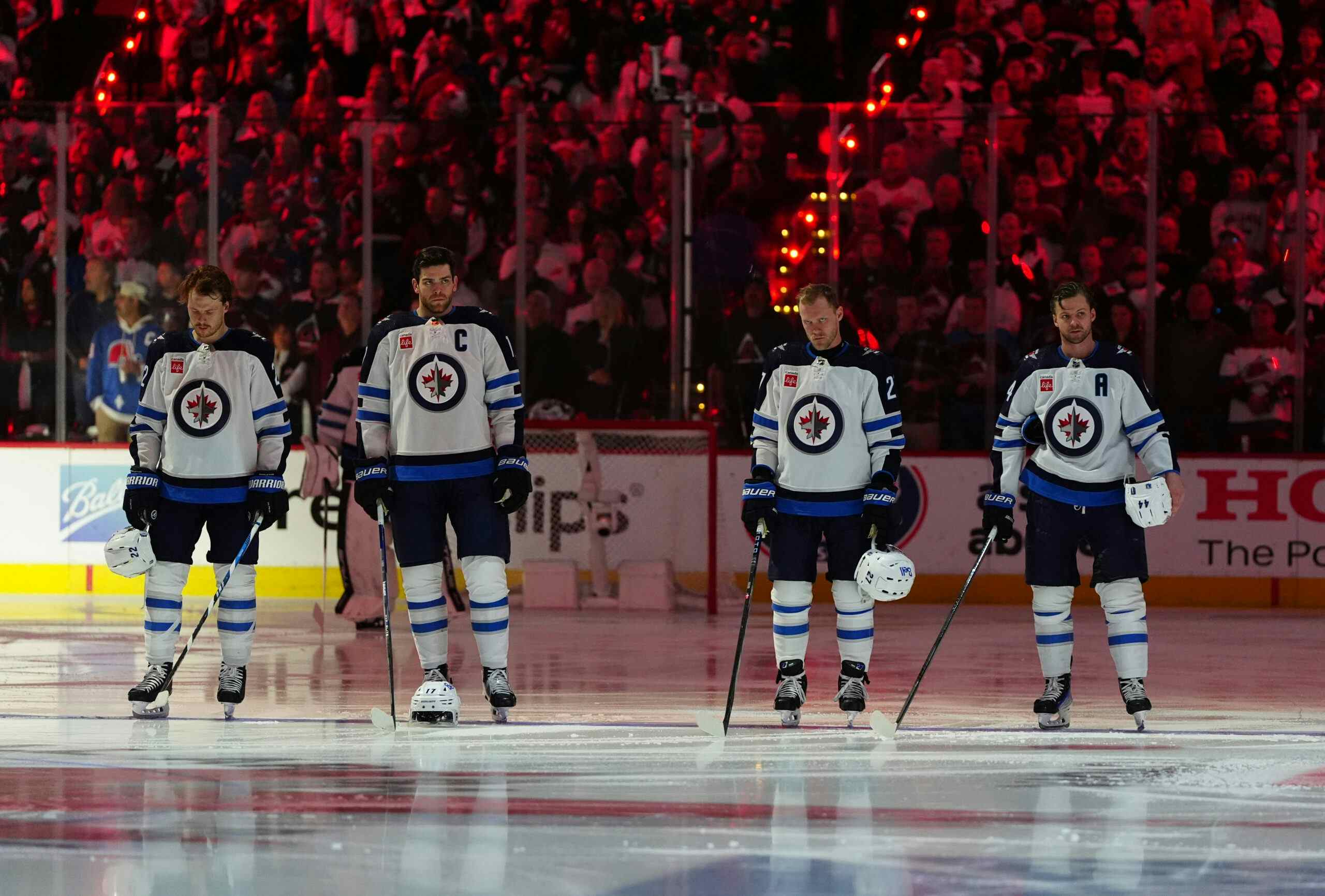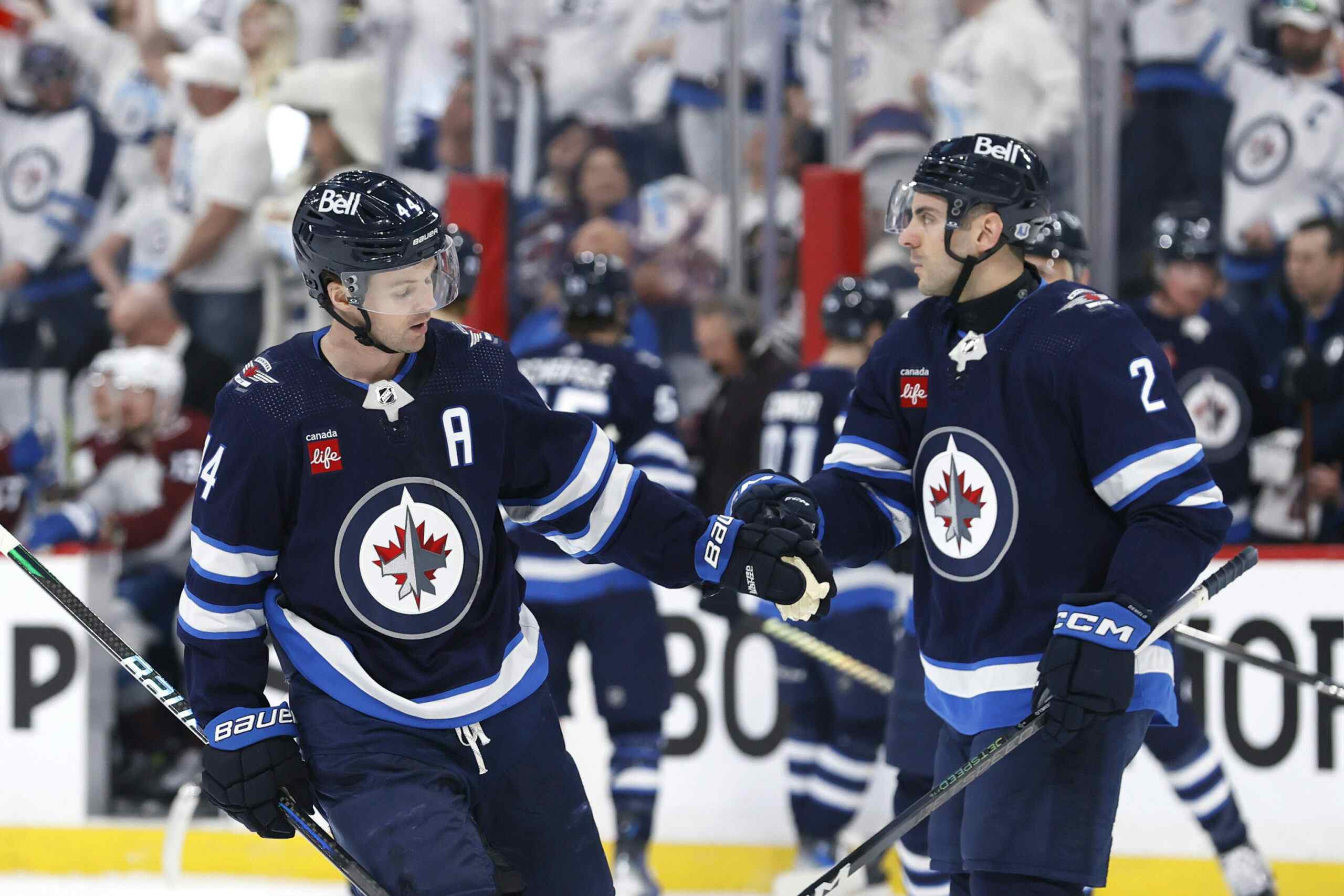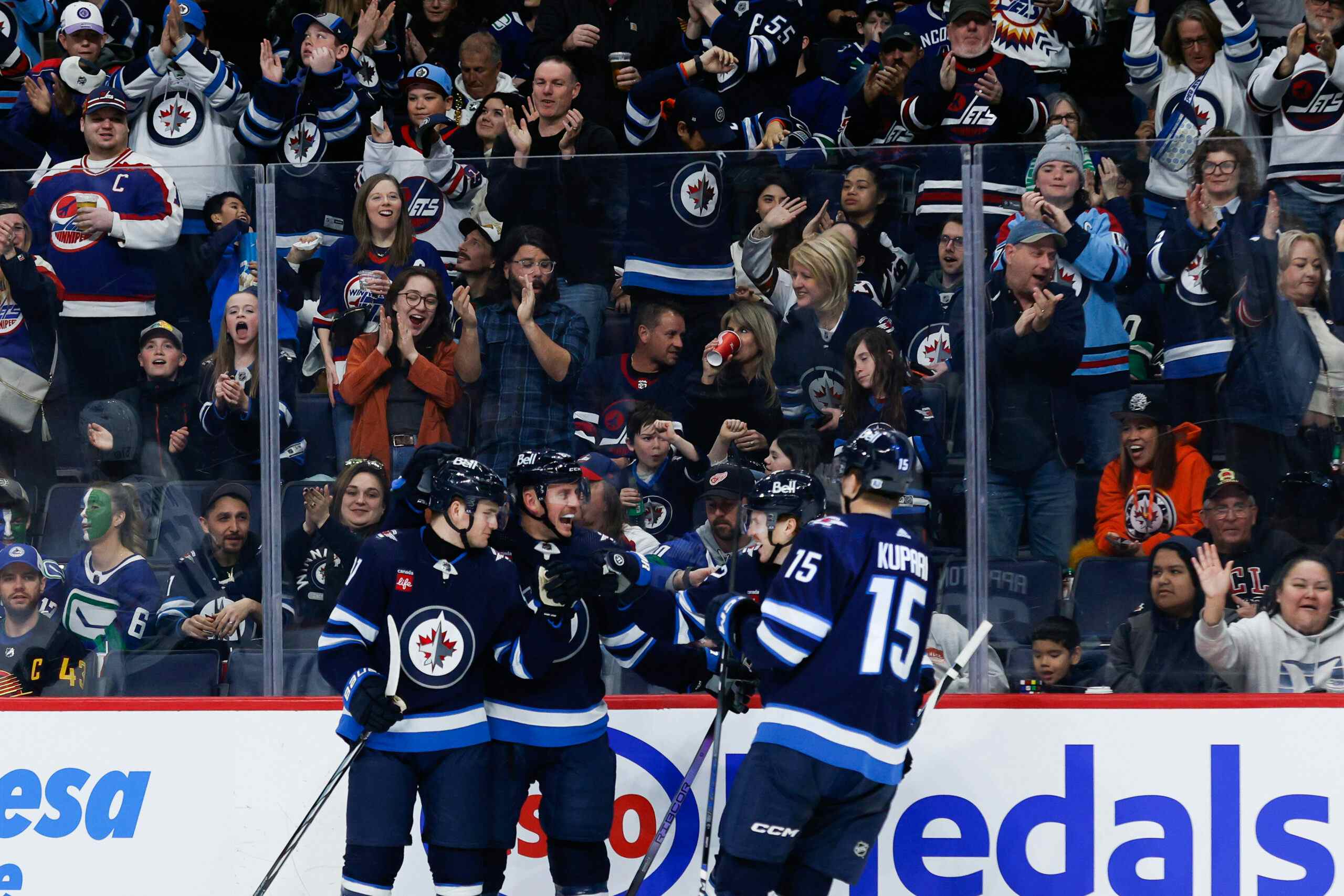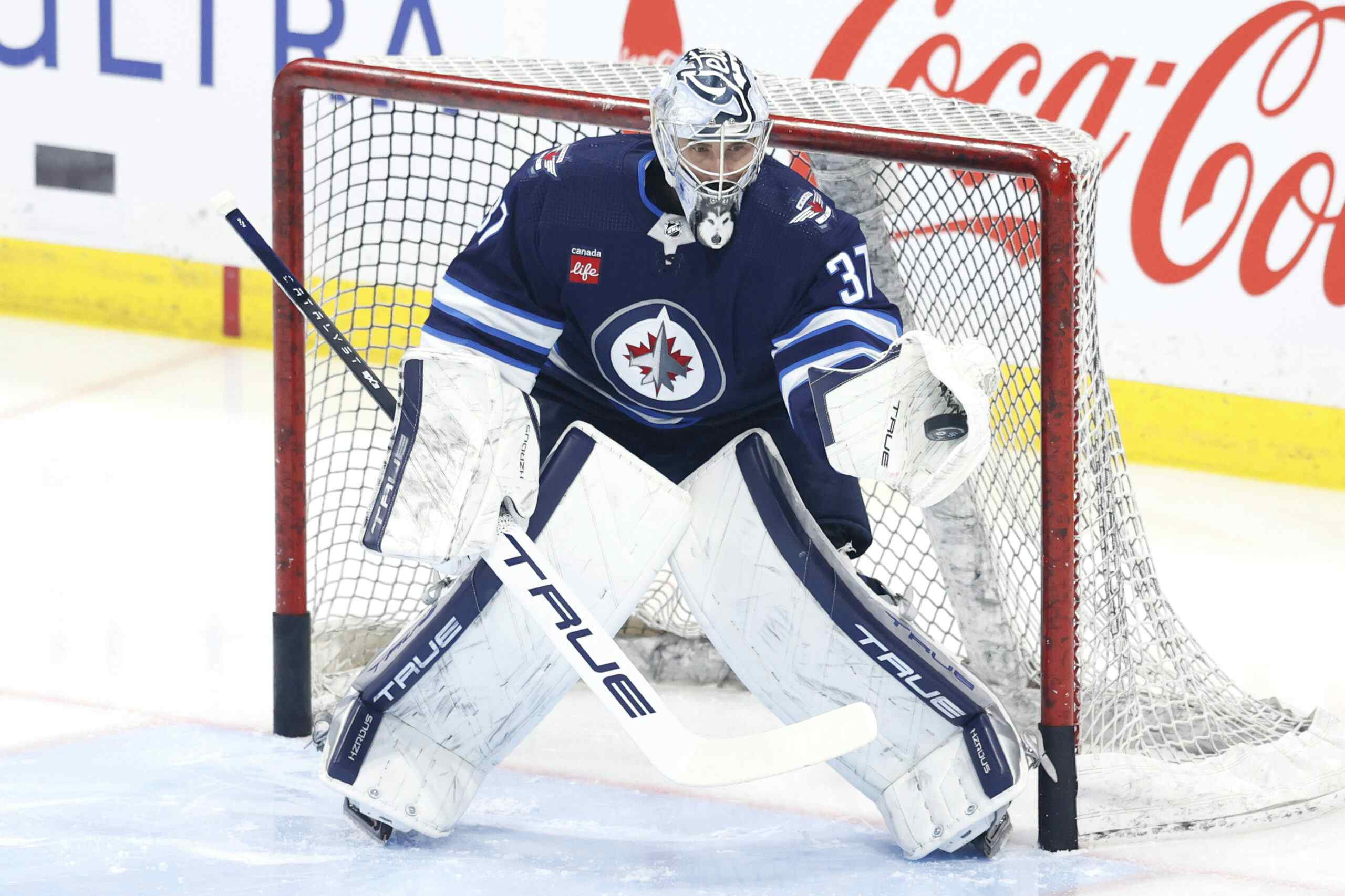By The Numbers: Jets have holes to fill at forward
By Garret Hohl
7 years ago
© Bruce Fedyck-USA TODAY Sports
The Winnipeg Jets are losing more games than they win. They sit third-last in standing’s points per game played. Some models show the Jets having a greater shot at first overall than making the playoffs. (Let’s ignore the models have Jets with a near 50 percent chance of neither playoffs nor top five pick)
Not everything is going as planned.
Just like one must know what broke before repairing a car, we must analytically dissect the Jets and see where the help is needed. Let’s look at the Jets’ holes and discuss some solutions on fixing the team, with keeping in mind the up coming trade deadline.
Current State

Using a similar method to last week, I combined the Jets’ forwards in XPM and their five-on-five weighted point production per minute pace. DTMAboutHeart‘s XPM is simply an expected goal model, that adjusts a player’s shot differentials for shot quality factors (shot distance, shot angle, rebound, etc.) and then adjusts a player’s performance due to usage factors (linemates, linematching, zone starts, etc.). Weighted point production simply means that a goal, a primary assist, and a secondary assist are not all viewed as equals.
Combined, these two statistics should account for almost ninety percent of the factors that go into a players overall on-ice value, or WAR. It won’t be their true ranking in WAR, but should get the general placement right.
I have ranked where each of the Jets’ forwards fit among the top 360 most used forwards (although I had to rank Thorburn prior to removing those players). Optimally a team wishes to carry as many forwards as possible with as high as rankings as possible. I will note that the above rankings are relative to ice time. If we look at overall impact regardless of ice time, the players shift.
Dom Luszczyszyn developed an alternative holistic model to DTM’s WAR, called Game Score.

Game Score is more heavily weighted towards a player’s overall production. The statistic was initially developed to estimate who had the “best game” in terms of helping a team win. It is agnostic to usage, not as ice time sensitive, does not try to be predictive in the same sense as XPM, and lacks in properly evaluating defensive impact (note: defensive impact not defensive position).
While not completely the same statistic, Game Score does paint a fairly similar picture to XPM. There are some legitimate discrepancies between the two, and it appears that most of it is driven by each player’s defensive impact. I would personally consider the truth for each Jet likely somewhere in the middle of the two numbers.
Another thing I should point out about these models is that they only show snap shots of a player. They ignore the trajectories. Just like Morrissey has been on a positive trajectory all season, most of the Jets young forwards are as well.
This is normal for players to get better as they get older:

Graphic credit: Canucks Army. Note: This is a different model than either of the above previous ones.
The Problem

The Jets’ “problem” up front is a lot harder to see than it was with those lining up on the blue line.
To make it a little more obvious, I averaged the forward’s ratings in WAR and Game Score. I then placed the Jets who are signed for next year into lines similar to how the Washington Capitals roll out their forwards, partially out of jealousy of their forward group. Finally, I italicized the names of players under the age of 24, signifying those most likely to make large gains in improvement over last season.
The Jets are trending to have an excellent top line next year with Nikolaj Ehlers, Mark Scheifele, and Blake Wheeler. Their second line next season should be far above average; Patrik Laine likely takes large steps forward in his development even if his scoring may drop a tad and Perreault should see his scoring regress back up at least somewhat to his historical norm.
The Winnipeg Jets forwards have two problems.
The Jets could use an upgrade (or two) in their bottom-six forwards. The Jets have the makings of a solid sheltered scoring line with Nic Petan and Marko Dano. They simply need a stronger overall player to fill that hole than Andrew Copp. This leaves the Jets with Shawn Matthias, Adam Lowry, and Joel Armia as the fourth line filled with players who can play on the third when need be.
Also, the Jets will likely need another player due to the expansion draft. There is a possibility the Jets expose and lose Tyler Myers, but it is most likely the Jets lose one of their forwards. The most likely candidates are Mathieu Perreault, Marko Dano, Adam Lowry, and Joel Armia.
The Future

The Jets farm and prospects at forward look a lot better at defense.
Jack Roslovic and Kyle Connor look as solid shots to play in the NHL as top-nine forwards. Both may end up as legitimate solutions to both problems. Kyle Connor could excel in a sheltered scoring role next season with a few pounds of strength and a season of experience under his wing over last season. Jack Roslovic has been the best player on the Moose and has the versatility to play many different roles depending on which player the Jets lose.
It is unreasonable to expect both to enter into the NHL and be huge impact players next season, but they reasonably could fill in with a minimum of third-line level impact next season.
The rest of the farm does not have much for immediate top-nine potential. Brendan Lemieux, Chase De Leo, Scott Kosmachuk, and JC Lipon gives the Jets a solid pool to draw for fourth line depth when need be. Brandon Tanev has been a decent fourth-line player as well, if re-signed.
Erik Foley, Mason Appleton, and C.J. Franklin could be coming over from the NCAA to add to that pool, likewise with Jansen Harkins, Michael Spacek, and Matteo Gennaro from junior.
Required Solutions
At first, this may make it seem like the forwards are a perfect place for the Jets to “stand pat” with.
A lot of the Jets’ forward group improvement should come from development of their young forwards. There’s a good chance that most of Ehlers, Scheifele, Laine, Copp, Petan, Dano, Lowry, and Armia take steps forward in their development next season. Wheeler and Perreault are both due for a bit of a bounce back season in their scoring paces.
It’s not inconceivable that the Jets carry two lines of first-line calibre forwards next season, with a sheltered scoring line and a high-possession cycle line performing at third-line levels.
However, the Jets need help at their blue line and the solution there may mean the Jets losing a forward or two in trade. A loss due to trade and the expansion draft could place the Jets from being a strong to weak forward group quite quickly.
The team’s hockey opperations may need to bring in a “money puck” type veteran or two next year through free agency to increase the competition at camp, fill holes lost through shoring up the defensive group, and sit as a potential Plan B if either or both of Connor and Roslovic are not ready next season.
Closing Thoughts
Again, it is not surprising the Jets have struggled this season. In addition to the Jets left-side defense being lackluster and the goaltending being non-existent, the very promising forward group has been a bit all over the place.
The forwards performing best in the two-way numbers have struggled to score and the ones scoring have been struggling with their two-way numbers. Still, the youth should get naturally better with development.
The Jets might lose a forward in trade to fix their needs with the defensive group. They might lose another forward to the expansion draft. Finally, the team already could use an extra bottom-six player next year.
Overall the team could be needing up to three NHL forwards next season. Kyle Connor and Jack Roslovic could fill two of those needs, but it is never best to gift a forward a spot. The good news is that free agency should be able to give the Jets another affordable and capable forward or two.
Easier said than done…
MORE FROM GARRET
- Jets have holes to fill on the blue line
- Where do the Jets skaters rank among the NHL
- Jets should start taking chances on players like Mark Barberio
- Trouba is developing into an elite defender
- Moose identify an organizational weakness for the Jets
- Jets struggles in net
- Armia-Lowry-Matthias have been really good
- The Jets’ performance at even-strength
- Despite recent struggles, Hellebuyck’s career has been really good
- The Jets should not be playing such a lowe event hockey
Recent articles from Garret Hohl





